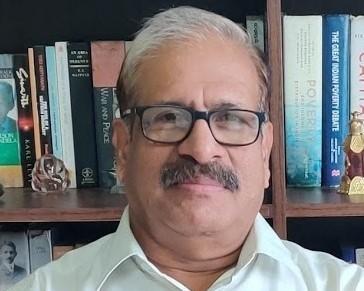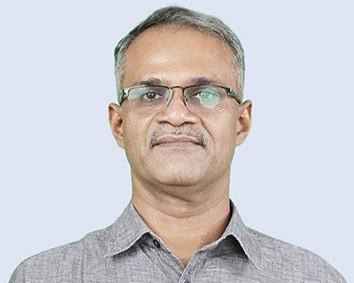I have spent about a month in Vietnam studying the present situation of rice cultivation, a sector that has immense importance in the economy of Vietnam.
Vietnam has recorded remarkable success in rice production over the last four decades. From a poor country that had to import rice to feed its population, Vietnam has successfully reduced poverty and is among the top exporters of rice in the world.
As part of my fieldwork, I surveyed 60 farmer households from a commune located in Thoai Son district of An Giang Province, in the Mekong Delta region of Vietnam. Rice production is best organised in this province. I share my preliminary impressions from the field in this blog.
My fieldwork site is located at a distance of around 20 km from Long Xuyen city, the capital of An Giang province. The distance from the capital of Thoai Son district, Nui Sap town, to the survey site is about 7 km – an easy drive across the remarkably flat topography of the Mekong Delta.
I chose a commune, the lowest level of administration in rural Vietnam, for fieldwork. A commune corresponds roughly to an Indian village panchayat. There are five hamlets in the commune that I chose. The commune and constituent hamlets are connected by all-weather roads.

Rice is cultivated in three seasons: November–March (Winter–Spring crop), April–July (Summer–Autumn crop), and August–November (Autumn–Winter crop). There can be a difference of one month in each crop cycle. The length of each crop cycle is generally a little more than 90 days.
Water from the Thoai river, a distributary of the Mekong, is used to irrigate rice in this commune. Water is pumped from the main canal to secondary canals constructed around rice fields. Pumps held in common are installed at different places to regulate water flow in the secondary canals. Individual farmers either use their own pumps or hired pumps, or depend on gravity flow to irrigate their fields. Water is at its highest level during the Autumn–Winter crop, when many places in the Mekong Delta are flooded. Farmers spend more on irrigation in this season than in other seasons, since in this season they have to pump water out multiple times.
Raising a third crop of rice has become possible after the construction of dykes that protect farm land from flooding. Before the dyke was built, all farm land was submerged in August–November. A dyke (bund) was constructed in the mid-2000s to stop water from entering fields. This resulted in the cultivation of a third crop of rice in about 300 hectares of rice fields in the commune.

The peculiar geography of this part of the Mekong Delta determines the layout of homesteads (and the relative absence of homestead crop cultivation). Houses are built on embankments alongside rivers and main canals. These embankments are often up to 100 metres wide and rise above the river/canal on one side and fields on the other. Roads, public buildings (schools, marketplaces, and so on), and houses are all built on these narrow embankments. Thus, while a house-site may have a small area of land surrounding it, the cultivation of vegetables or fruit trees is not significant. There is no field cultivation of vegetables in this area. One reason for this is perhaps that market mechanisms for vegetable produce are not as developed as they are for rice.
Most of the operations for rice cultivation have been mechanised. Land preparation is by owned/hired tractors or tillers. Multipurpose sprayers are used for sowing, applying fertilizers, and spraying plant protection chemicals. These operations are generally done on contract — on the basis of kilograms of fertilizers or litres of chemicals. Harvesting is carried out by combine harvesters. Like other operations, harvesters are also hired on piece-rated contracts; payments are based on the area harvested. Most rice is directly sown. The only operation for which the predominant wage-form is a time-rated daily wage is re-transplanting, that is, rearranging seedlings in a field to even out the distance between rice seedlings.

Most farmers own mechanical multi-purpose sprayers, which enable them to undertake at least three operations on their own—sowing, applying fertilizer, and spraying plant protection chemicals. A sprayer has a storage capacity of about 25 litres. Small farmers usually hire machines for land preparation and harvesting from large farmers.
While agriculture is clearly the major source of income for most farmer households, there were some farmer households whose members worked at other non-farm occupations. Most of these workers work in nearby cities or towns, in various industries or services. In addition to these, there is an agricultural research centre located within the commune that provides some regular work to people from the commune.
In terms of general amenities, the commune has a health clinic, several primary schools and a secondary school. Educational attainments among young people of the commune are relatively high: there are students pursuing education beyond school level in colleges and universities. Motorcycles are the most common mode of transport and almost all households have one.
Almost all houses were built as elevated houses to withstand flooding. I was told that over time, when floods stopped becoming a regular feature of life in this commune, houses were extended to include more surrounding area and were modified using cement and bricks.
The visit to Vietnam has been exciting so far. Household surveys and interviews with farmers and experts have given me a wealth of data on agriculture in the Mekong Delta. I hope to further my knowledge in the coming days.
About the author
Deepak Johnson is a JSPS Postdoctoral Researcher at the Institute of Economic Research, Hitotsubashi University.
















































































